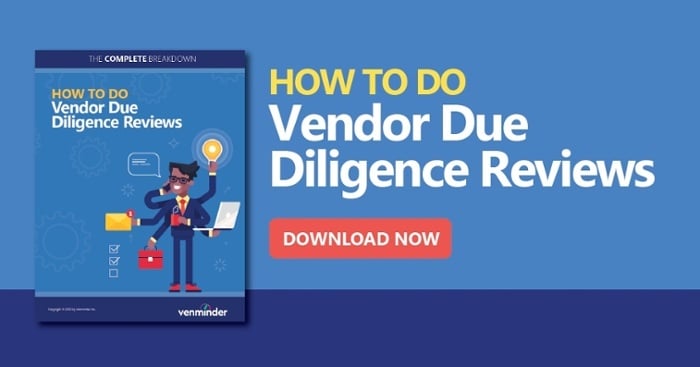Imagine you’re on a gameshow. You have 3 locked doors and one key that will open only one of the doors. Instead of winning a “prize”, the door the key opens is to the vendor risk program you’re going to be working with from here on out – or until changes by you are made.
Behind the first door, you find an organization with a clunky decentralized vendor management framework. They’re falling behind on their vendor risk reviews as so many hands are involved and are constantly receiving examiner recommendations to improve processes.
Behind the second door, the process is a little better. However, this time the organization doesn’t have any type of tool to help them with facilitating and managing risk reviews.
And finally, behind door number three, It’s your dream vendor management world! You find an organization with a centralized framework, they have streamlined vendor risk reviews and a tool to help facilitate all of this. Employees are very satisfied as they can easily see when a vendor risk review needs completed, by who, by when and understand their role in it all.
Which door are you hoping the key will open? I’m willing to bet it's door number 3. The matter of the fact is that you can obtain a program that is like this. One of the first steps is knowing some of the “keys” to conducting vendor risk reviews.
Conduct Vendor Risk Reviews More Efficiently with These 3 Keys
How do you consolidate it all and simplify vendor risk reviews? Let’s keep the theme of “3” going with these quick key suggestions:
- Remember, ongoing monitoring of vendor reviews is crucial – Therefore, review risk on a regular basis. By performing reviews regularly, you will have less findings to address each time around. You’re being more proactive and catching things right away as they happen which, of course, equates to less time spent on each review every time.
- Understand that when you risk rate a vendor you have to determine TWO levels of risk – Did you know this? Every vendor will be critical or non-critical to operations. This is known as their business impact level. Also, a vendor will have a regulatory risk rating of high, medium or low. This is determined by a questionnaire that addresses categories of risk like strategic, operational, compliance, reputation, etc.
- Have a well-developed system in place to manage vendor reviews – Have some type of tool that helps with designating task ownership. This will help everyone involved know what needs to be done and by when. In addition, you’ll have access to more comprehensive, board ready reporting.
Taking advantage of these key tips should help simplify the process.
Here are specific steps you can take for 5 common vendor due diligence reports. Download the eBook.













